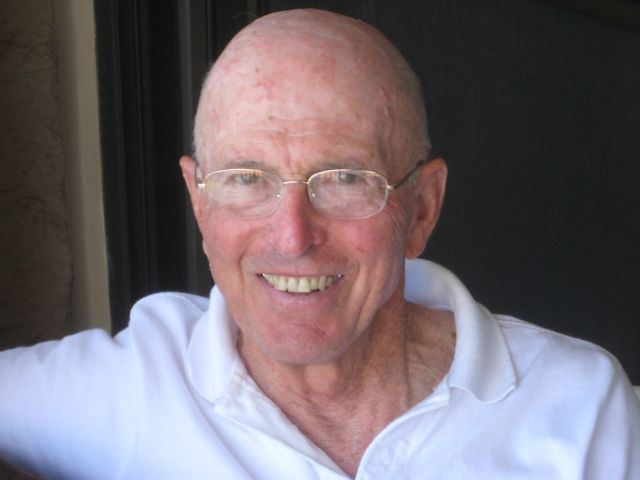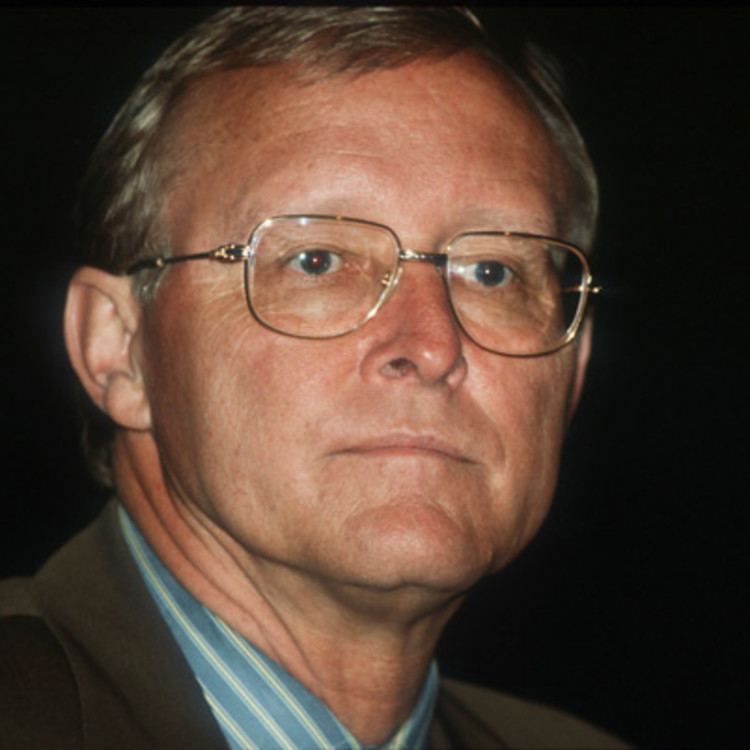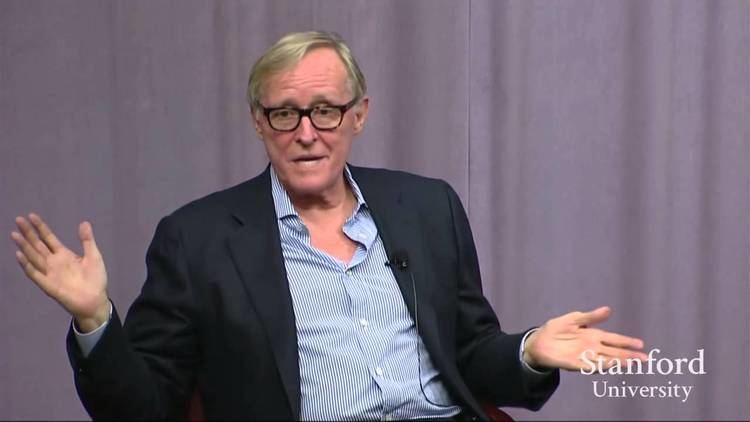Nationality American Role Entrepreneur | Name James Clark | |
 | ||
Institutions Silicon Graphics, Inc.Netscape Communications Corporation Alma mater University of UtahUniversity of New Orleans Thesis 3-D design of free-form B-spline surfaces (1974) Children Kathy Clark, Dylan Vivienne Clark Books Netscape Time, Act Like Somebody, 101 Things Every Pastor Sh, I'm Proud To Call You My F, How to Build Hot Rod Trucks Similar People Kristy Hinze, Marc Andreessen, Ivan Sutherland, Michael Lewis, Omid Kordestani | ||
Net worth 1.51 billion USD (2015) | ||
James h clark 2012 horatio alger award winner
James Henry Clark (born March 23, 1944) is an American entrepreneur and computer scientist. He founded several notable Silicon Valley technology companies, including Silicon Graphics, Inc., Netscape Communications Corporation, myCFO, and Healtheon. His research work in computer graphics led to the development of systems for the fast rendering of three-dimensional computer images.
Contents
- James h clark 2012 horatio alger award winner
- Stanford Engineering Hero Jim Clark on innovation and embracing change
- Early life and education
- Academia
- Silicon Graphics Inc
- Netscape
- HealtheonWebMD
- Other affiliations
- Awards
- Personal life
- Yachting
- Philanthropy
- References

Stanford Engineering Hero Jim Clark on innovation and embracing change
Early life and education

Clark was born in Plainview, Texas and endured a difficult childhood. He dropped out of high school after being suspended, and spent four years in the Navy where he was introduced to electronics. Clark began taking night courses at Tulane University's University College where, despite his lack of a high school diploma, he was able to earn enough credits to be admitted to the University of New Orleans. There, Clark earned his Bachelor's and a master's degrees in physics, followed by a PhD in computer science from the University of Utah in 1974.
Academia

After completing his PhD, Clark worked at NYIT's Computer Graphics Lab, serving as an assistant professor at the University of California, Santa Cruz from 1974 to 1978, and then as an associate professor of electrical engineering at Stanford University from 1979 to 1982. Clark's research work concerned geometry pipelines, specialized software or hardware that accelerates the display of three dimensional images. The zenith of his group's advancements was the Geometry Engine, an early hardware accelerator for rendering computer images based on geometric models which he developed in 1979 with his students at Stanford.
Silicon Graphics, Inc.

In 1982, James Clark along with several Stanford graduate students founded Silicon Graphics, Inc. (SGI). The earliest Silicon Graphics graphical workstations were mainly terminals, but they were soon followed by stand-alone graphical Unix workstations with very fast graphics rendering hardware. In the mid-1980s, Silicon Graphics began to use the MIPS CPU as the foundation of their newest workstations, replacing the Motorola 68000.

Soon, Silicon Graphics became the world leader in the production of Hollywood movie visual effects and 3-D imaging. Silicon Graphics focused on the high-end market where they could charge a premium for their special hardware and graphics software.

In the early 1990s, Clark fell out with Silicon Graphics management and left the company.
Netscape
In 1993 Clark sought out Marc Andreessen who had led the development of Mosaic, the first widely distributed and easy-to-use software for browsing the World Wide Web, while employed at the National Center for Supercomputing Applications (NCSA). The next year Clark and Andreessen founded Netscape. The founding of Netscape and its IPO in 1996 launched the Internet boom on Wall Street during the mid-to-late 1990s. Clark reaped the financial benefits of that boom: with an investment of US$5 million, he earned US$2 billion. Just as the Internet boom came to an end, Clark moved on again and Netscape was later sold to AOL.
Healtheon/WebMD
In 1995, Clark became interested in streamlining the paperwork associated with the health-care industry. The resulting start-up, Healtheon, was founded in early 1996 with backing from Kleiner Perkins and New Enterprise Associates. Although Clark's original idea of eliminating the paperwork and bureaucracy associated with medical care was ambitious, it did lead to successes in administrative streamlining of medical records technology. However, an Atlanta, Georgia startup company, WebMD originally focused on medical content was also making similar in-roads. Knowing WebMD had financial backing from Microsoft, Clark decided to merge Healtheon with the original WebMD to form the WebMD Corporation (NASDAQ: WBMD). WebMD is a leader in health information on the Internet.
Other affiliations
In 1999, Jim Clark launched myCFO, a company formed to help wealthy Silicon Valley individuals manage their fortunes. In late 2002, while Clark served on the board of directors, most of myCFO's operations were sold to Harris Bank and now operate as Harris myCFO.
Clark was chairman and financial backer of network-security startup Neoteris, founded in 2000, which was acquired by NetScreen in 2003 and subsequently by Juniper Networks.
Clark was a founding director and investor in the biotechnology company DNA Sciences, founded in 1998 to unravel the genetics of common disease using volunteers recruited from the Internet launched 1 August 2000 (see The New York Times). In 2003, the company was acquired by Genaissance Pharmaceuticals Inc.
Clark was the subject of the 1999 bestseller The New New Thing: A Silicon Valley Story by U.S. author Michael Lewis. ISBN 0-340-76699-9
Clark was a notable investor in Kibu.com, an Internet website for teens, which received approximately $22 million in funding. The website shut down in 2000, returning its remaining capital to investors.
Clark co-produced the 2009 movie The Cove. His funding made possible the purchase and covert installation of some high-tech camera and sound-recording equipment required to capture the film's climactic dolphin slaughter. The film addresses the problem of whale and dolphin killing in Taiji, Wakayama, Japan.
Clark sits on the board and is one of the primary investors in the consumer facing mobile technology company Ibotta.
Clark also sits on the board of IEX: The Investors Exchange IEX.
Awards
Clark received the ACM SIGGRAPH Computer Graphics Achievement Award in 1984. He was a recipient of the 1997 Kilby International Awards, which honored him for his computer graphics vision and for enabling networked information exchange.
In 1988, Clark was an Award Recipient of the EY Entrepreneur of the Year Award in the Northern California Region.
Personal life
Clark has been married four times and has four children. In 2000, his daughter Kathy married Chad Hurley, co-founder of YouTube. The divorce from his third wife of 15 years, Nancy Rutter, a Forbes journalist, is reported to have cost him $125 million in cash and assets in the settlement. Soon afterwards he began dating Australian model Kristy Hinze, 36 years his junior. Hinze became his fourth wife when they married in the British Virgin Islands on March 22, 2009. She gave birth to a daughter, Dylan Vivienne in September 2011, and later, Harper Hazelle, in August 2013.
Yachting
Clark is an enthusiastic yachtsman but cannot sail in rough ocean races such the Sydney-Hobart due to an arthritic condition in his ankles and prefers one-day regattas on the smoother waters of the Mediterranean, the Caribbean and off Newport, Rhode Island. He is the owner of several large sailing yachts:
Philanthropy
Clark's philanthropic focus has been to contribute to Stanford University where he was an electrical engineering professor. In 1999, Clark pledged $150 million to the university to go towards erecting the James H. Clark Center for Biomedical Engineering and towards the sciences for interdisciplinary biomedical research, including stem cell research. Construction started in 2001 and was completed in the summer of 2003. The center is the hub for the Bio-X program. Additionally, some of his pledge went to procure new educational materials at Stanford, to provide positions for faculty who will be part of the research effort, and to sponsor scholars among graduate students.
In 1999, Clark was honored as number two on Slate Magazine's list of the 60 largest charitable contributions of 1999. His number two spot was in recognition of his $150 million pledge to Stanford University which was the largest single gift to Stanford since the founding grant and among the largest ever in higher education.
In September 2001, Clark stopped payment on $60 million of the $150 million pledge to Stanford University for Biomedical Science, citing anger over President Bush's restrictions on stem cell research. His decision did not halt the production of the James H. Clark Center which opened in 2003. Stanford's comment in their press release addressing Clark's action was: “While we are saddened by Mr. Clark’s decision, we are deeply grateful for the $90 million he already has committed to The James H. Clark Center for Biomedical Engineering and Sciences, and we appreciate his strong feelings on this subject.”
In the Fall of 2005 Clark and David Filo of Yahoo! each donated $30 million to Tulane University's School of Engineering for merit-based scholarships to provide education to deserving students regardless of financial situation in the discipline of engineering. However, after Tulane's restructuring that saw the elimination of nearly all engineering disciplines, the board requested Clark and Filo allow the funds to be used for other programs.
Clark is a board member for the national council of the World Wide Fund for Nature (WWF) and contributes towards the organization. Furthermore, the Perlman Music Program has recognized him for his continued philanthropic efforts towards their organization and their endowment fund.
